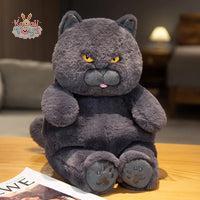As toddlers begin to explore the world, their emotional development becomes just as important as their physical growth. While we often focus on milestones like walking and talking, emotional skills such as empathy, self-soothing, and expressing feelings are just as essential. Surprisingly, one of the most effective tools in nurturing these emotional skills isn’t a high-tech gadget or structured learning program—it’s something soft, cuddly, and irresistibly cute: kawaii toys.
At first glance, these adorable plush companions might just seem like another addition to the overflowing toy box. But for toddlers, kawaii toys play a far deeper role. Their gentle appearance, soft textures, and comforting presence help shape the way young children understand emotions, relate to others, and develop inner security.
Kawaii Toys: More Than Just Cute
Kawaii toys, inspired by Japanese culture and characterized by their big eyes, round shapes, and heart-melting cuteness, have captured the hearts of children and adults alike. For toddlers, this kind of design is especially appealing because it feels familiar and non-threatening. The gentle faces and soft colors are emotionally inviting, which makes toddlers naturally drawn to them.
These toys aren’t just about visual appeal, though. Their softness makes them perfect cuddle buddies during naps or moments of distress. Holding a plush kawaii bunny or bear creates a calming effect that helps toddlers manage unfamiliar or overwhelming situations—whether it's a new environment, meeting strangers, or even just winding down after a busy day.
Creating Emotional Security Through Connection
One of the key emotional needs for toddlers is the feeling of safety. During their early years, they’re navigating a world full of new experiences, and they rely heavily on consistent sources of comfort to feel grounded. This is where kawaii toys come in as emotional anchors.
When a child carries their favorite plush companion from room to room or insists on bringing it along during outings, it’s not just a cute habit—it’s a form of emotional regulation. The toy becomes a reliable presence that helps the toddler feel secure even when their surroundings change. Over time, this attachment becomes a foundation for developing independence and confidence.
How Kawaii Toys Encourage Emotional Expression
Toddlers are still learning the language of emotions. They often don’t know how to say “I feel sad” or “I’m scared,” so they communicate through play. Plush kawaii toys become tools in this emotional expression. A child might talk to their plush cat or comfort it after a pretend fall—without realizing they’re expressing their own emotions in the process.
This kind of play isn’t just adorable—it’s crucial. By interacting with their toys, toddlers begin to explore the ideas of empathy and compassion. They learn what it means to care for something, to soothe, and to nurture. These skills, built through simple moments of play, shape the emotional intelligence they carry into school and beyond.
Doki Toys: The Next Level of Emotional Engagement
As kawaii toys continue to grow in popularity, a specific subcategory has emerged that takes emotional engagement to the next level—doki toys. These toys, often designed with subtle emotional expressions or interactive features, are gaining traction among parents who want to offer their children toys that not only entertain but also educate emotionally.
Doki toys are often inspired by characters that reflect a range of feelings—joy, shyness, curiosity, and even sadness. This diversity helps toddlers understand that all emotions are valid and can be expressed safely. When a toy shows a shy face or a blushing expression, it gives children permission to feel those things too.
Some doki toys also include sensory elements such as soft rattles, gentle sounds, or textured fabrics. These small additions make the toys even more engaging, encouraging toddlers to explore and interact in ways that develop both emotional and sensory awareness.
A Lasting Impact on Childhood Development
What starts as a plush animal in a toddler’s crib often becomes a cherished companion with a lasting impact. Many children keep their favorite kawaii toy for years, long after they’ve outgrown other items. This bond isn’t just sentimental—it’s symbolic of the emotional milestones the toy has helped them navigate.
As toddlers grow, their relationship with their plush companion evolves. It becomes a quiet listener during lonely moments, a brave sidekick in imaginary adventures, and a bedtime protector when the lights go out. Each of these interactions builds emotional resilience and teaches children that comfort can be found not just in people, but in the relationships they build—with toys, with their environment, and eventually, with themselves.
Choosing the Right Emotional Companion
For parents, selecting toys that support healthy emotional growth is an important step. Kawaii and doki toys offer more than aesthetics—they offer connection. When you give your toddler a toy that feels soft, looks friendly, and invites interaction, you’re giving them a resource that helps them feel understood and safe.
Whether it’s a smiling cloud plush, a sleepy bear, or a gentle-hearted fox, the toy becomes more than an object—it becomes part of your child’s emotional world. And in that world, safety, comfort, and connection are everything.
The Gentle Power of Cute
In a fast-paced world full of stimulation, toddlers benefit from moments of quiet comfort and emotional warmth. Kawaii toys and doki toys offer exactly that—without noise, screens, or batteries. Just soft textures, kind eyes, and a silent promise of love.
By choosing toys that do more than entertain, parents can help their toddlers grow into emotionally confident, empathetic individuals. Sometimes, all it takes is one small, smiling plush friend to start that journey.
